Battle
In the spring of 1303 the French army moved against Saint-Omer. William of Jülich responded by an attack on the weakly defended city of Arques, killing the French garrison of 60 and burning down the city. De Châtillon hurried to Arques, where the Flemish prepared for battle. As in the Battle of the Golden Spurs, William of Jülich positioned his infantry, mainly from Ypres in a horseshoe shaped formation. For hours, the French tried to break the Flemish formation, but to no avail. Finally the French withdrew to Saint-Omer, leaving 300 dead behind. The Flemish had lost 1,000 killed and did not pursue. The battle was a Flemish victory, as they retained the field. A new French invasion of Flanders had been prevented.

The Battle of Bouvines was fought on 27 July 1214 near the town of Bouvines in the County of Flanders. It was the concluding battle of the Anglo-French War of 1213–1214. Although estimates on the number of troops vary considerably among modern historians, at Bouvines, a French army commanded by King Philip Augustus routed a larger allied army led by Holy Roman Emperor Otto IV in one of the rare pitched battles of the High Middle Ages and one of the most decisive medieval engagements.
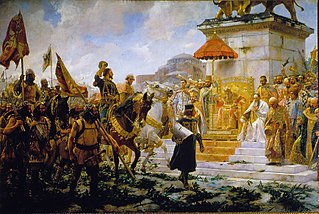
Year 1303 (MCCCIII) was a common year starting on Tuesday of the Julian calendar.
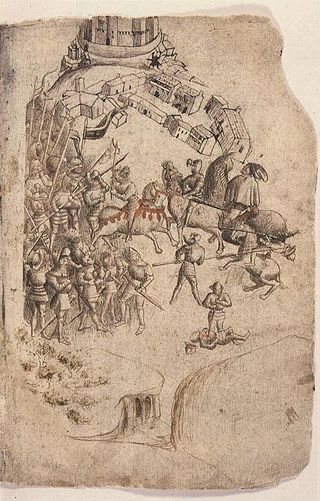
A schiltron is a compact body of troops forming a battle array, shield wall or phalanx. The term is most often associated with Scottish pike formations during the Wars of Scottish Independence in the late 13th and early 14th centuries.
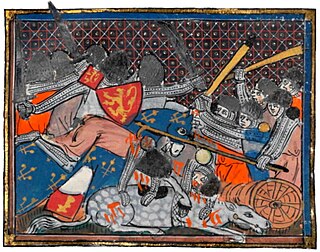
The Battle of the Golden Spurs or 1302 Battle of Courtrai was a military confrontation between the royal army of France and rebellious forces of the County of Flanders on 11 July 1302 during the 1297–1305 Franco-Flemish War. It took place near the town of Kortrijk in modern-day Belgium and resulted in an unexpected victory for the Flemish.

Arques is a commune in the Pas-de-Calais department in northern France, bordering Saint-Omer.
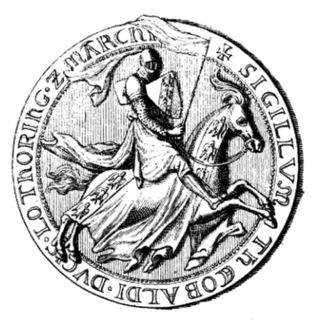
Theobald II was the Duke of Lorraine from 1303 until his death in 1312. He was the son and successor of Frederick III and Margaret, daughter of King Theobald I of Navarre of the Royal House of Blois.
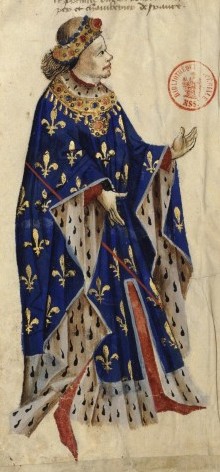
Louis I, called the Lame was a French prince du sang, Count of Clermont-en-Beauvaisis and La Marche and the first Duke of Bourbon, as well as briefly the titular King of Thessalonica from 1320 to 1321.
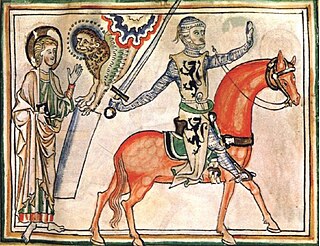
Guy of Dampierre was the Count of Flanders (1251–1305) and Marquis of Namur (1264–1305). He was a prisoner of the French when his Flemings defeated the latter at the Battle of the Golden Spurs in 1302.

The Battle of Furnes, also known as Battle of Veurne and Battle of Bulskamp, was fought on 20 August 1297 between French and Flemish forces.
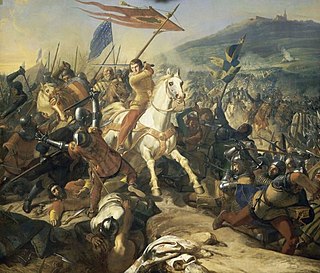
The Battle of Mons-en-Pévèle was fought on 18 August 1304 between the French and the Flemish. The French were led by their king, Philip IV.
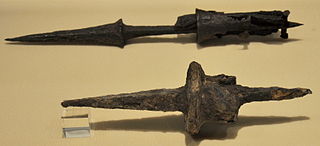
A goedendag was a weapon originally used by the militias of Medieval Flanders in the 14th century, notably during the Franco-Flemish War. The goedendag was essentially a combination of a club with a spear. Its body was a wooden staff roughly 90 cm to 150 cm long with a diameter of roughly 5 cm to 10 cm. It was wider at one end, and at this end a sharp metal spike was inserted by a tang.
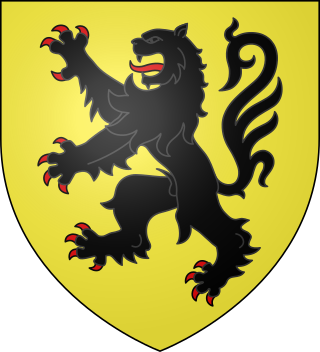
The Treaty of Athis-sur-Orge was a peace treaty signed on 23 June 1305 between King Philip IV of France and Robert III of Flanders. The treaty was signed at Athis-sur-Orge after the Battle of Mons-en-Pévèle and concluded the Franco-Flemish War (1297–1305).
Jacques de Châtillon or James of Châtillon was Lord of Leuze, of Condé, of Carency, of Huquoy and of Aubigny, the son of Guy III, Count of Saint-Pol and Matilda of Brabant. He married Catherine of Condé and had issue.
The Treaty of Melun was signed in April 1226 between Louis VIII of France and Joan, Countess of Flanders.

William of Jülich, called the Younger, was one of the Flemish noblemen that opposed the annexation policies of the French king Philip IV, together with Pieter de Coninck.
John I of Ponthieu was Count of Aumale.

On 23 August 1328, the Battle of Cassel took place near the city of Cassel, 30 km south of Dunkirk in present-day France. Philip VI fought Nicolaas Zannekin, a wealthy farmer from Lampernisse. Zannekin was the leader of a band of Flemish rebels. The fighting erupted over taxation and punitive edicts of the French over the Flemish. The battle was won decisively by the French. Zannekin and about 3,200 Flemish rebels were killed in the battle.
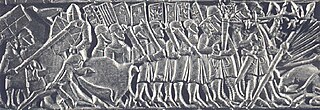
The Franco-Flemish War was a conflict between the Kingdom of France and the County of Flanders between 1297 and 1305.
The siege of Tournai was an event of the Franco-Flemish War in 1303.
The Battle of Axspoele took place on 21 June 1128 in Flanders between William Clito and Thierry of Alsace. The two men were rivals for the title of Count of Flanders. William had been appointed to the title by Louis VI of France following the 1127 murder of Charles the Good but Thierry, grandson of Charles, had the support of Henry I of England.In 1128 Thierry secured the support of a number of Flemish cities, although most of the nobility supported William.
This page is based on this
Wikipedia article Text is available under the
CC BY-SA 4.0 license; additional terms may apply.
Images, videos and audio are available under their respective licenses.














